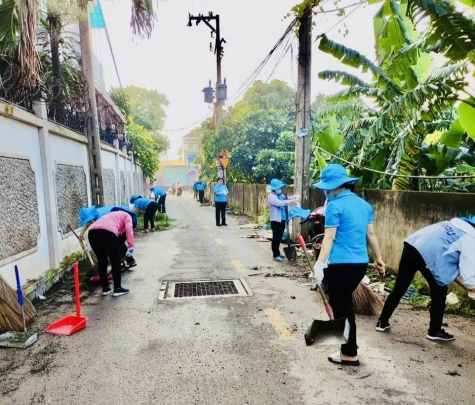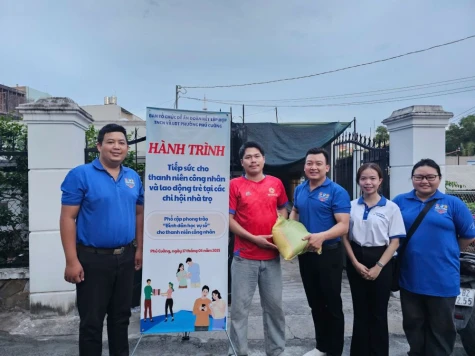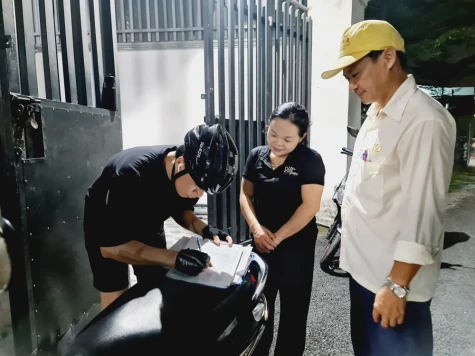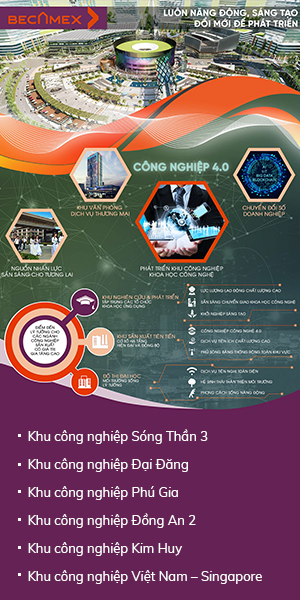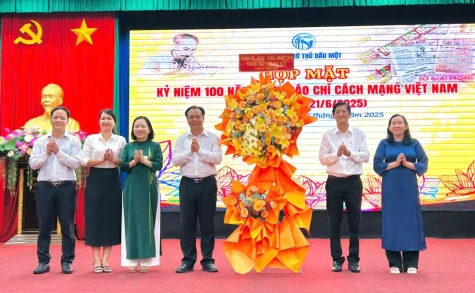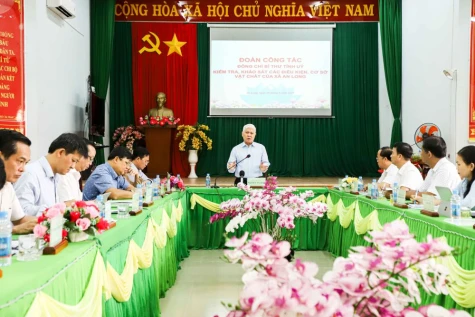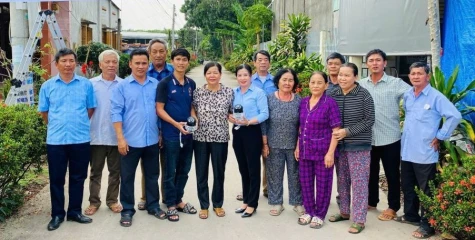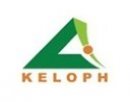Di An city is gradually realizing its goal of building a modern, civilized and environmentally friendly urban area through movements such as “Waste Classification at Source” and “Streets Without Public Trash Bins”. These are not merely environmental campaigns, but also widespread emulation movements that help nurture green lifestyles, spark community responsibility and spread positive values among the people.
Awakening a sense of responsibility
From the initial days of launching the waste classification program and the “Street Without Trash Bins” model in late 2024, Di An city has demonstrated a methodical, persistent and dedicated approach. Small actions—like properly disposing of waste into the correct bins—have transformed from an individual household’s responsibility into a collective community habit, fostered through practical training sessions and the genuine support of local authorities.

In a short time, the city has held nearly 60 specialized training sessions across public and private schools, State offices, residential areas, apartment complexes, waste collection units and building management boards. More than 10,000 people have directly received waste classification knowledge—clear proof of the city’s effort to provide hands-on skills, inspiring self-awareness and a sense of responsibility. Particularly, schools have become a stronghold of the movement. All public schools and over 240 private institutions in the city have conducted awareness programs on waste classification. From school, students bring green messages back to their homes, helping form good habits for families and quarters. In this way, the seeds of environmental consciousness are spreading naturally and positively throughout the community.
Listening and accompanying
Unlike traditional one-way communication methods, Di An city advocates for building movements through sincere listening and concrete actions. Forums such as “Di An city’s Natural Resources and Environment Sector Listens to the People” organized by the city’s People's Committee in coordination with the city’s Party Committee’s Propaganda and Mass Mobilization Committees, have created opportunities for residents to express their thoughts and contribute opinions. This allows the local authorities to promptly adjust its approaches to better suit real-life conditions.
In addition, the topic of waste classification was also included in the 2024 thematic voter meetings such as “Household Solid Waste Classification at Source – A Coordinated Solution for Effective Implementation in Residential Areas”. Di An city’s Fatherland Front Committee organized a social feedback conference on the collection, transportation and treatment of waste. Through these forums, grassroots opinions were gathered, analyzed and incorporated into revised plans in line with the specific needs of each locality.
Notably, community feedback has helped the city refine waste collection and classification models to match the characteristics of each quarter and street. In densely populated areas like Song Than Urban Area, Duong Sat Residential Area and Biconsi, many households have actively practiced waste classification. The correct classification rate has continued rising, with some areas reaching 70%–80%. These figures clearly illustrate the effectiveness of the movement and its strong alignment with public sentiment.
The methodical implementation, strong public consensus and enthusiastic participation from all-level authorities and sectors in Di An have enabled the movement to spread widely and integrate naturally into daily life. This proves that a patriotic emulation movement does not necessarily need to be associated with grand achievements—it can start from simple, everyday actions. When done well, consistently, and with a sense of responsibility, these small efforts can lead to significant changes.
From policy to habit
The green urban movement is reshaping lifestyles in Di An. From State offices to major streets such as Nguyen An Ninh, DT743A and DT743C, trash bins on sidewalks are gradually disappearing, replaced by cleaner and more organized surroundings. Many residents have shared that while waste classification or traveling farther to dispose of trash was inconvenient at first, it soon became a habit—and a good one. Today, their homes are cleaner, and the streets look better than ever.
The “Waste Classification at Source” and “Streets Without Trash Bins” initiatives in Di An are vivid examples of creative implementation. Citizens don’t need to make grand gestures—just persistent, small acts like sorting trash, keeping surroundings clean and raising awareness. Collectively, these actions build into a powerful and sustainable force.
This “green journey” has also faced many challenges. However, what is most important is the city’s open-minded attitude and its clear commitment to innovating implementation methods as demonstrated by Di An city. The city has boldly piloted new models in certain areas, proactively conducted surveys and adjusted methods to ensure appropriateness before scaling up. Vo Trong Tai, Vice Chairman of Di An city’s People's Committee stated: “We view this as a long-term program that cannot be rushed. To reach success, it requires the coordinated involvement of the entire political system, sectors, wards and the active participation of every citizen. Each citizen is a 'green ambassador' contributing to making Di An a more civilized and sustainable city every day..."
With a strategic vision, a practical approach and a people-centered foundation, Di An city is writing the story of a green urban area—where the environment is not only cleaner, but where people live more civilly, consciously and humanely. On this journey, every small action taken today is a seed for a better future, embodying the spirit of patriotic emulation through the most tangible, relatable and far-reaching efforts.
The movement of waste classification at source and creation of trash bin-free streets in Di An is a vivid testament to innovative practices. It is when each individual doesn’t need to do anything grand, but simply perseveres in small actions—like sorting waste, maintaining cleanliness and raising awareness. These efforts combine to form a powerful and sustainable collective strength. |
Reported by Do Trong-Thao Nguyen-Translated by Kim Tin








